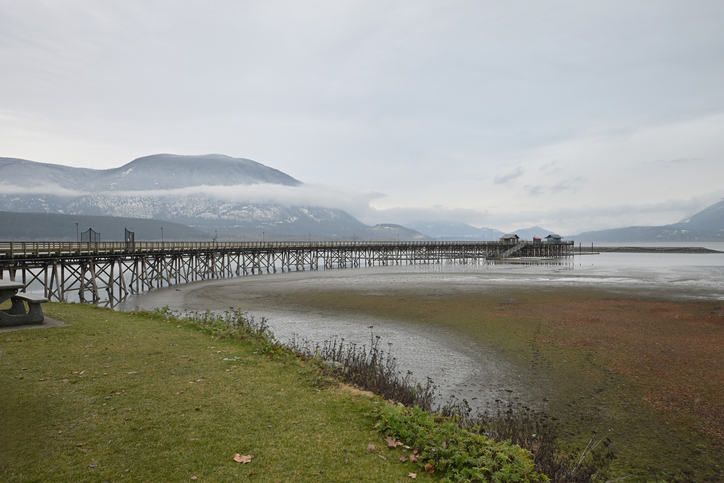New research from the University of Victoria suggests that drift logs washing ashore along the B.C. coast are causing widespread damage to rocky intertidal ecosystems and may be contributing to long-term declines in shorebird populations.
The study, led by UVic biologist Tom Reimchen and two undergraduate students, found that the free-floating logs that pile up on beaches across Vancouver Island and Haida Gwaii disrupt the ecological environment. Although often seen as stabilizing features or natural seating for beach-goers, more than 90 per cent of drift logs move each year, especially during storms—scouring the intertidal zone and disrupting species that depend on it.
“In this study, we looked at both the ecological impact of drift logs, and at log abundance and movement over time,” says Reimchen. “Both aspects of the study had worrisome results.”
The team documented steep reductions in barnacle populations—a foundation species in the intertidal zone—on surfaces exposed to log movement. Barnacle numbers were 20 to 80 per cent lower in log-exposed areas compared with protected crevices. The loss of barnacles also harms the many small invertebrates that live between them, removing an important food source for shorebirds.
B.C.’s rocky shorelines support species such as black oystercatchers, surfbirds, black turnstones and rock sandpipers. Researchers say the ongoing loss of barnacle beds and invertebrates likely plays a role in the 50-per-cent decline in some shorebird populations since 1970.
Reimchen said the scale of drift-log movement is “persistent and cyclical,” and the problem has intensified over the past century.
Using satellite imagery and archival photographs, the research team quantified log abundance across inside passages, outer coastal shores and Haida Gwaii’s western coastline. They recorded a 520-per-cent increase in drift logs since the late 19th century. Even remote shorelines showed similar log densities to developed areas.
The study points to the logging industry as a major source of the increase: more than 60 per cent of logs bore signs of human origin, and many “natural” logs may also be tied to logging-related landslides.
Reimchen said drift logs should be viewed as a significant ecological disturbance, comparable to ice scouring or heatwaves. “It’s critical that we begin reducing the number of drift logs added to the marine environment and begin introducing conservation measures to protect organisms in the intertidal zone,” he said.
The research, published in Marine Ecology, was supported by the Natural Sciences and Engineering Research Council and aligns with the United Nations’ Sustainable Development Goal on life below water.











